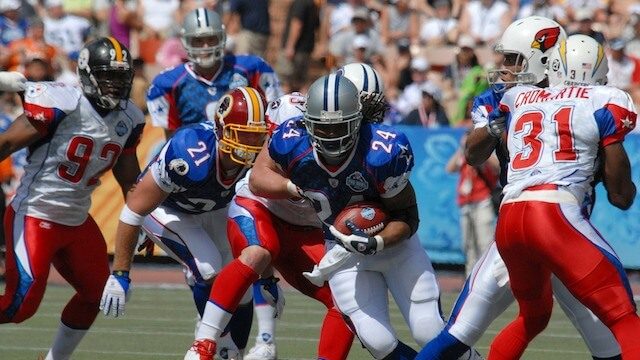
By Katie Moritz | Rewire
You probably don’t know who sees you as competition at work. But if there’s someone in your workplace who really grinds your gears, you might be able to use that competitive energy to your advantage.
In the world of professional football, teams take more risks during games when they’re playing against their rivals, according to an analysis of more than 2,000 NFL games over eight years by a team of researchers.
When teams were playing their rivals—for example, Packers vs. Vikings—players were more likely to try two risky moves: going for it on fourth down rather than punting, and going for a two-point conversion by run or pass instead of an extra-point kick.
When there’s more to lose, players are willing to try almost anything—even if it there’s a chance it won’t pay off—to get ahead.
The same can be said about workplace rivals. When you’re trying to out-perform someone you see as competition, you’re apt to come up with more off-the-wall ideas and make riskier decisions than when you’re working alongside a person you don’t consider a rival. Because of this, other research has shown, competition in the workplace can be both a positive and a negative.
It’s at play for companies, too. A company might take bigger risks if they see other companies in their industry as rivals, the researchers suggest.
Channeling rivalry off the field
The research team, headed up by Lisa Ordóñez, vice dean of the University of Arizona’s Eller College of Management, wanted to test out their NFL rivalry theory on people who aren’t football players. They invited a bunch of University of Arizona students to a lab, and asked them to arrive wearing UA football fan gear. In the lab, folks posed as fans of rival (Arizona State University) and non-rival (University of Colorado) teams. Each UA student played a risk-taking computer game against either an ASU or CU fan.
The researchers measured the UA students’ physiological response to coming into contact with the other fans—their heart rates and galvanic skin response, a change to the electrical properties of the skin that happens when we get emotional. They also observed how they behaved around the rivals and the non-rivals.
“The reaction was visceral,” Ordóñez said to the university. “When they saw that ASU hat, their nose flared, their claws came out, they made some snide comments like, ‘What are you wearing that hat for?’ Their heart rate went up; their galvanic skin response went up; they were agitated physiologically. Then, when we looked at their behavior on the task, they also took more risks. They made riskier decisions.”
Why take risks?
Competition in the workplace can be healthy or damaging, depending on whether the competition fosters feelings of excitement or anxiety, according to Harvard Business Review. Competing against other people for a bonus or a promotion is one thing, competing against someone else because your performance determines which one of you will lose their job is another. Rivalries born of fear and resentment are not productive or suited for the workplace.
But taking risks at work can be important for moving forward in your career, and you don’t need a rival to make that happen. Some workplaces have a risk-averse culture, where fear of punishment or job loss holds people back from trying or suggesting new ways of doing things. But you can learn to be confident taking risks, even if it’s not the norm in your workplace. Find out how from executive coach Joel Garfinkle.
This article is part of America’s Entrepreneurs: Making it Work, a Rewire initiative made possible by the Richard M. Schulze Family Foundation and EIX, the Entrepreneur and Innovation Exchange.
![]() This article originally appeared on Rewire. Sign up for Rewire here.
This article originally appeared on Rewire. Sign up for Rewire here.
© Twin Cities Public Television - 2018. All rights reserved.
Read Next



